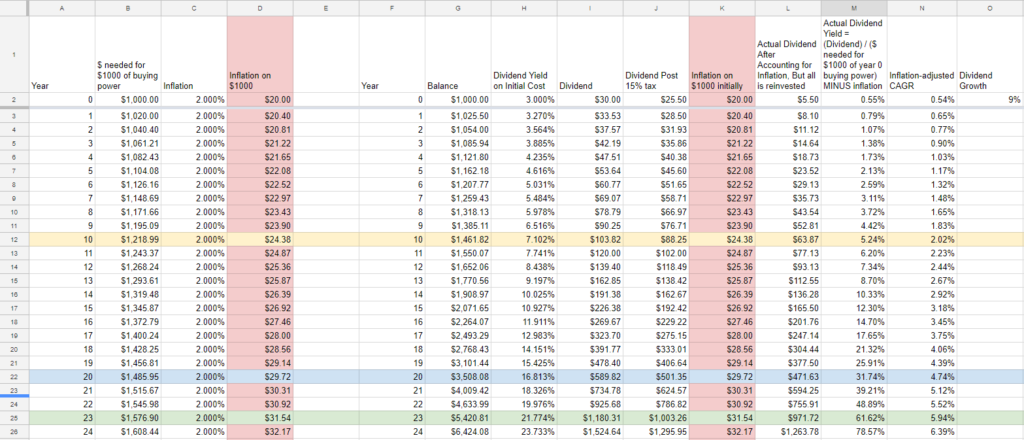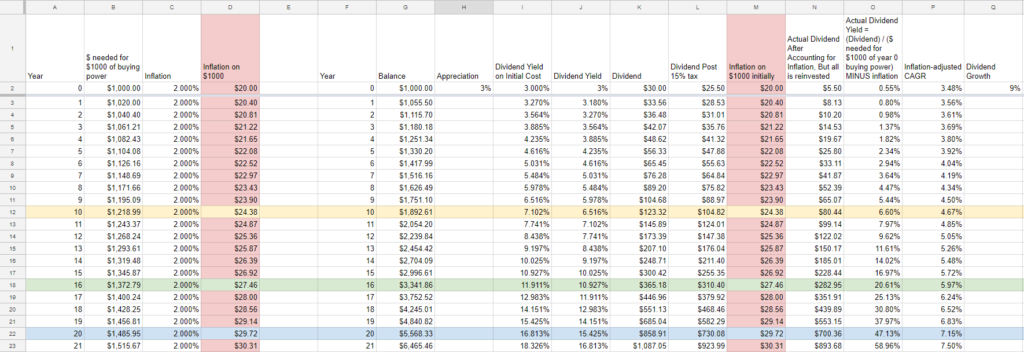The power of compound interest needs to be appreciated. “Compound interest is the eighth wonder of the world. He who understands it, earns it … he who doesn’t … pays it.” – Albert Einstein
There are some people who love value stocks and invest for dividend growth. This is a totally sensible investing strategy. However, you must not only think about the dividends! Compound interest will cause subtle factors to massively influence the outcome.
I’ve seen some people explain why dividend growth stocks “work”. They say that a 3% dividend yield is good, and state the important point is the dividend growth, of say 9%. They followup by saying, 9% after 2% inflation is 7%! Compounding this will be great! Or is it?
Here are some calculations
Assumptions
Inflation is 2% a year
Growth stock appreciates 8% a year
Growth stock has no dividend
Dividend Growth stock does not appreciate
Dividend starts at 3% and grows 9% a year
Dividend is taxed at 15% tax rate
Post-inflation, the growth stock will have a CAGR of appreciation minus inflation = 8%-2%
Growth Stock Inflation-adjusted CAGR = 6%
For dividend growth stock calculations, I have made this table simulating a $1000 initial balance:

The first year for the dividend growth stock is 3% minus taxes minus inflation = 3% * (100%-15%) – 2%
Inflation-adjusted 1st-year Yield = 0.55%
You can hopefully see the issue. Inflation will be taking a huge chunk out of the initial balance. Therefore, the total return is a mere 0.55% for the first year. The dividend grows at 9%, so the yield-on-cost increases each year which is great. However, after 10 years (highlighted yellow), the inflation-adjusted CAGR is still a mere 2.02%. CAGR is 4.74% by 20 years (highlighted blue) . It doesn’t catch-up to the growth stock and reach 6% until 23 years later (highlighted yellow)! Not so good.
I then added 3% appreciation. You might think that 6% total a year is pretty close to the growth stocks’ total of8%. However, don’t forget what Einstein said! That 2% difference as well as the 15% tax on the dividends makes a big difference still.
It still takes 16 years to catch-up to the growth stock’s 6% CAGR.

Companies that have good growth and also pay steady growing dividends are great. They can potentially have similar total yield compared to pure growth stocks, and provide stability that many people want in their portfolios.
